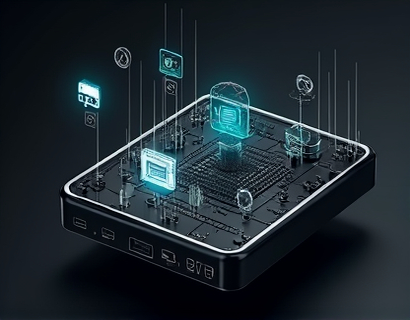AI-Driven Insights for Robotaxi Services: Enhancing Safety and Education in Shared Mobility
The landscape of transportation is undergoing a transformative shift with the advent of autonomous vehicles, particularly in the context of shared mobility services. Among these, Robotaxi services stand out as a promising solution, offering a blend of convenience, safety, and efficiency. To navigate this evolving sector, it is crucial to leverage AI-driven insights that provide verified information and educational value to a diverse audience. This article delves into how an AI chat interface can revolutionize access to knowledge about Robotaxi services, catering to tech enthusiasts, parents, educators, students, and transportation professionals.
Understanding Robotaxi Services
Robotaxi services represent a significant advancement in the shared mobility space, combining the benefits of ride-sharing with the autonomy of self-driving vehicles. These services aim to provide safe, reliable, and cost-effective transportation solutions, reducing the need for personal vehicle ownership and minimizing environmental impact. To fully appreciate the potential of Robotaxi services, it is essential to understand their operational mechanics, safety features, and the technological innovations driving their development.
Operational Mechanics
Robotaxi services operate on a network of autonomous vehicles that can be summoned via a mobile application. These vehicles use a combination of sensors, GPS, and advanced algorithms to navigate through traffic and reach destinations efficiently. The key to their operation lies in the integration of AI systems that enable real-time decision-making, adaptive routing, and seamless passenger experiences. Unlike traditional taxis, Robotaxi services can operate 24/7, scale rapidly to meet demand, and reduce the need for parking spaces in urban areas.
Safety Features
Safety is paramount in the development and deployment of Robotaxi services. AI-driven systems continuously monitor the vehicle's surroundings, detecting and responding to potential hazards in real-time. Advanced sensor technologies, such as LiDAR, radar, and cameras, work in tandem to create a comprehensive understanding of the environment. Machine learning algorithms process this data to make informed driving decisions, ensuring that the vehicle adheres to traffic rules and avoids accidents. Additionally, robust cybersecurity measures protect the vehicle's systems from external threats, safeguarding passenger data and ensuring uninterrupted service.
AI-Driven Insights: A Resource for All
The complexity of Robotaxi technology necessitates a platform that can demystify these systems for a broad audience. An AI chat interface serves as an ideal solution, offering interactive and personalized information to users. This platform can provide verified insights, address common queries, and offer educational content tailored to different user groups. By ensuring the accuracy and reliability of information, such a resource builds trust and fosters a deeper understanding of the technology.
Verified Insights for Tech Enthusiasts
For tech enthusiasts, the AI chat interface can delve into the technical aspects of Robotaxi services, explaining the intricacies of autonomous driving systems, AI algorithms, and sensor technologies. Users can ask specific questions about the hardware and software components, receive detailed explanations, and stay updated on the latest advancements. The chat interface can also provide links to research papers, technical whitepapers, and industry reports, enriching the user's knowledge base.
Educational Value for Parents and Educators
Parents and educators play a crucial role in shaping the next generation's understanding of emerging technologies. The AI chat interface can offer simplified explanations of Robotaxi concepts, making the subject accessible to younger audiences. Interactive lessons and quizzes can be integrated to enhance learning, helping students grasp the principles of autonomous vehicles, AI ethics, and the broader implications of shared mobility. This educational approach not only informs but also inspires curiosity and interest in STEM fields.
User-Friendly for General Audiences
For the general public, the AI chat interface should provide clear and concise information about Robotaxi services. Users can inquire about the benefits of shared mobility, the safety record of autonomous vehicles, and the environmental impact of Robotaxi services. The chat can also offer practical tips on how to use Robotaxi apps, what to expect during a ride, and how to contribute to the safety and efficiency of the system. By addressing common concerns and providing straightforward answers, the platform demystifies the technology and encourages adoption.
Ensuring Safety and Trust
Building trust in Robotaxi services is essential for widespread adoption. The AI chat interface can play a pivotal role in this by providing real-time safety updates, answering user concerns, and offering reassurance through verified information. Regular updates on safety metrics, incident reports, and regulatory compliance can be shared, demonstrating the commitment to passenger safety. The chat can also guide users through emergency procedures and provide contact information for customer support, ensuring that help is always available.
Child-Friendly Version
Recognizing the importance of making technology accessible to children, the AI chat interface can include a child-friendly version. This version would use simpler language, engaging visuals, and interactive elements to explain Robotaxi concepts. Topics could include how autonomous vehicles work, the role of AI in ensuring safety, and the environmental benefits of shared mobility. By making the content engaging and age-appropriate, the platform can spark interest in young minds and foster a generation of tech-savvy individuals.
Future of Transportation: The Impact of Intelligent Systems
The integration of AI in Robotaxi services is not just a technological advancement but a step towards a more sustainable and efficient future. By reducing the number of personal vehicles on the road, Robotaxi services can alleviate traffic congestion, lower emissions, and improve urban livability. The data collected from these services can also inform urban planning and public policy, leading to smarter city designs and better transportation infrastructure. As AI continues to evolve, the potential for further innovations in shared mobility is vast, promising a future where transportation is safer, more accessible, and environmentally friendly.
Conclusion
The AI-driven chat interface for Robotaxi services represents a powerful tool for enhancing understanding and trust in shared mobility. By providing verified insights, educational content, and a safe experience for all users, this platform can play a crucial role in the adoption and success of autonomous vehicles. As the transportation industry continues to transform, such resources will be invaluable for tech enthusiasts, parents, educators, students, and professionals alike, ensuring that everyone has the knowledge needed to navigate this exciting new era.











































